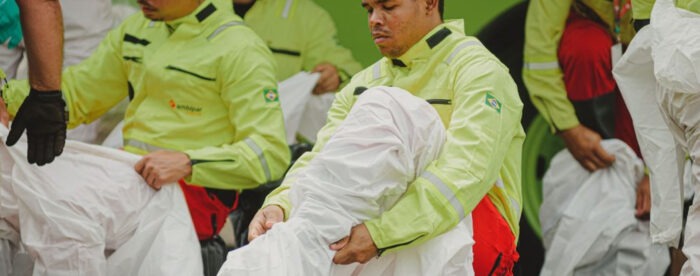Our world is full of different environments, and sometimes these can be dangerous for children. When kids face environmental emergencies, it’s important to know how to help them. PALS certification and online PALS recertification teach healthcare workers how to take care of children in serious medical situations, including those caused by the environment. Read on to learn more about environmental emergencies and how PALS helps manage them.
What are Environmental Emergencies?
Environmental emergencies happen when something in a child’s surroundings causes harm. These emergencies can happen anywhere – at home, in nature, or even in cities. These can include:
- Very hot or cold temperatures
- Drowning
- Animal bites or stings
- Poisoning from plants or chemicals
- Lightning strikes
- Altitude sickness
What Are Some Common Environmental Emergencies in Children?
Children are especially at risk of environmental emergencies. Let’s look at some of the most common environmental emergencies that affect kids:
a) Heat-Related Emergencies: When it’s very hot outside, children can get sick from the heat. This includes:
- Heat exhaustion: The body gets too warm and loses too much water.
- Heat stroke: The body usually cools off by sweating. But sometimes, this isn’t enough. This can happen when it’s very hot outside, especially if it’s also humid. It can lead to heat stroke
Signs to look for:
- Red, hot skin
- Fast heartbeat
- Headache
- Feeling dizzy or sick
- Not sweating (in heat stroke)
b) Cold-Related Emergencies: When it’s very cold, children can get:
- Hypothermia: The body temperature drops too low.
- Frostbite: Parts of the body (usually fingers, toes, nose) freeze.
Signs to look for:
- Shivering
- Confusion
- Pale or blue skin
- Pain or numbness in fingers or toes
c) Drowning: This happens when a child is underwater and can’t breathe. It can happen in pools, lakes, or even bathtubs.
Signs to look for:
- Not breathing
- Blue lips or skin
- Unconsciousness
d) Animal Bites and Stings: These can range from bee stings to snake bites.
Signs to look for:
- Pain or swelling at the bite site
- Trouble breathing (in allergic reactions)
- Fever or chills
e) Poisoning: This can happen if a child eats or drinks something harmful.
Signs to look for:
- Stomach pain
- Vomiting
- Confusion
- Trouble breathing
How Does PALS Help with Environmental Emergencies?
PALS provides a step-by-step approach to handling emergencies like environmental emergencies:
a) Assessment:
- Check if the child is responsive
- Look at breathing and circulation
- Check for signs specific to the emergency
b) Basic Life Support:
- Start CPR if needed
- AED use is advised if required.
c) Specific Treatments:
- For heat emergencies: Cool the child down
- For cold emergencies: Warm the child up slowly
- For drowning: Remove from water and start rescue breathing
- For bites/stings: Remove the stinger if present, and watch for allergic reactions
- For poisoning: Call poison control, follow their instructions
d) Advanced Care:
- Give fluids through an IV if needed
- Use special medicines as required
- Prepare for hospital transfer
PALS teaches healthcare workers to work as a team. Each person has a job, from checking vital signs to giving medicines. Clear communication helps provide the best care.
What Are The Ways To Prevent Environmental Emergencies?
While PALS is great for treating emergencies, preventing them is even better. Here are some ways to help prevent environmental emergencies in children:
a) Heat Safety:
- Drink plenty of water
- Wear light, loose clothing in hot weather
- Never leave children in cars
b) Cold Safety:
- Dress in layers for cold weather
- Come inside to warm up often
- Watch for signs of hypothermia
c) Water Safety:
- Always supervise children near water
- Teach kids to swim
- Use life jackets in boats
d) Animal and Insect Safety:
- Teach kids not to approach strange animals
- Use insect repellent in buggy areas
- Know what poisonous animals live in your area
e) Poison Prevention:
- Keep medicines and cleaning products locked up
- Teach kids not to eat unknown plants or berries
- Have the poison control number handy
What Is PALS Training and Certification?
Anyone who works with kids. especially in healthcare, must try to get PALS certified. This includes:
- Doctors
- Nurses
- Paramedics
- Emergency Medical Technicians (EMTs)
To get PALS certified, you need to:
- Take a PALS course
- Pass a written test
- Demonstrate the skills in practice scenarios
PALS certification lasts for two years.
What Is Online PALS Recertification?
Many healthcare workers choose to renew their PALS certification online. This is a convenient way to keep your skills up to date. The renewal can take anywhere from 4 to 8 hours and it can be done at your own pace. Online recertification is often cheaper and more flexible than in-person classes.
Conclusion
Environmental emergencies can happen to any child, anywhere. They can be scary, but with the right knowledge and training, they can be managed effectively. Whether you’re a parent, teacher, or healthcare worker, understanding environmental emergencies and PALS certification and online PALS recertification can help you keep children safe.
Keep an eye for more news & updates on Internal Insider!










